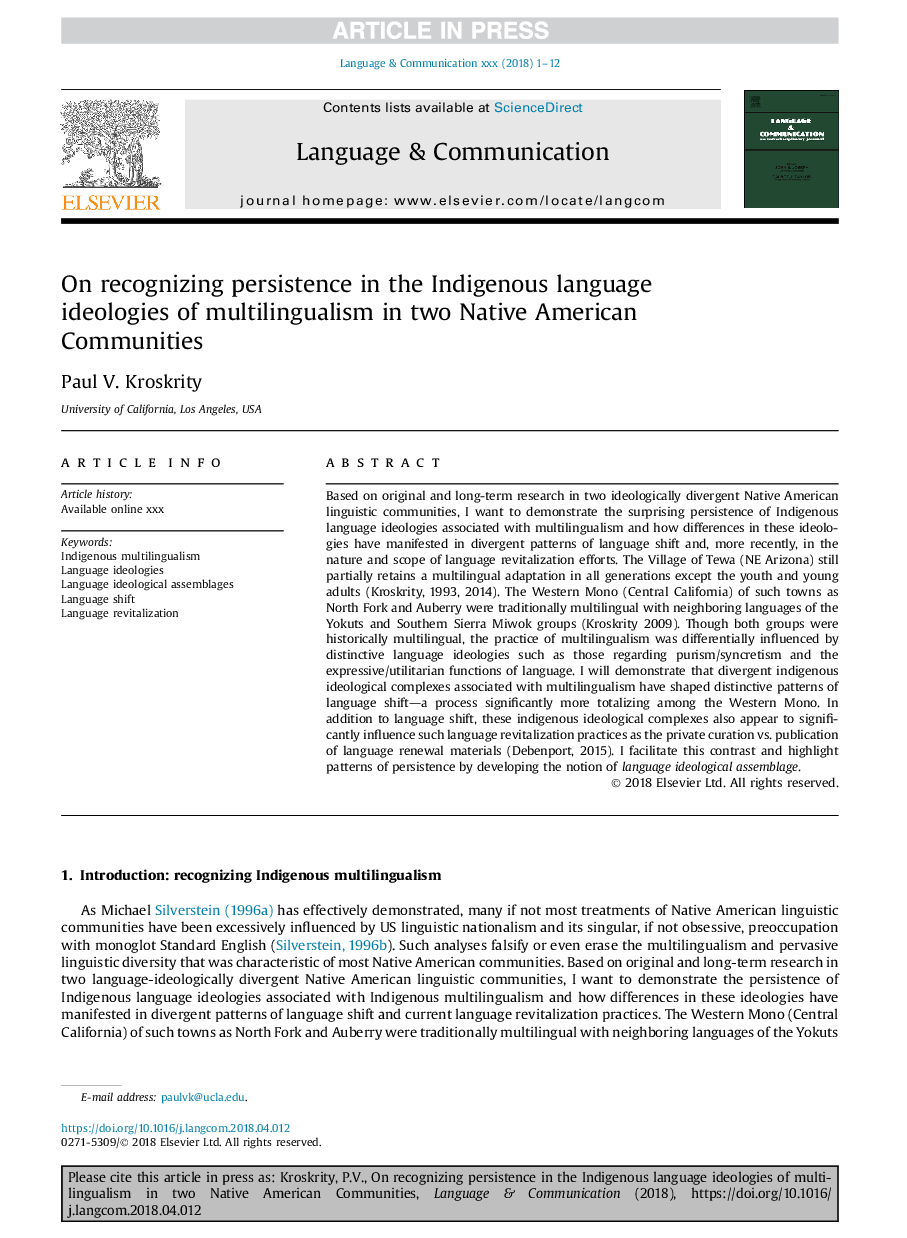| Article ID | Journal | Published Year | Pages | File Type |
|---|---|---|---|---|
| 11004546 | Language & Communication | 2018 | 12 Pages |
Abstract
Based on original and long-term research in two ideologically divergent Native American linguistic communities, I want to demonstrate the surprising persistence of Indigenous language ideologies associated with multilingualism and how differences in these ideologies have manifested in divergent patterns of language shift and, more recently, in the nature and scope of language revitalization efforts. The Village of Tewa (NE Arizona) still partially retains a multilingual adaptation in all generations except the youth and young adults (Kroskrity, 1993, 2014). The Western Mono (Central California) of such towns as North Fork and Auberry were traditionally multilingual with neighboring languages of the Yokuts and Southern Sierra Miwok groups (Kroskrity 2009). Though both groups were historically multilingual, the practice of multilingualism was differentially influenced by distinctive language ideologies such as those regarding purism/syncretism and the expressive/utilitarian functions of language. I will demonstrate that divergent indigenous ideological complexes associated with multilingualism have shaped distinctive patterns of language shift-a process significantly more totalizing among the Western Mono. In addition to language shift, these indigenous ideological complexes also appear to significantly influence such language revitalization practices as the private curation vs. publication of language renewal materials (Debenport, 2015). I facilitate this contrast and highlight patterns of persistence by developing the notion of language ideological assemblage.
Related Topics
Social Sciences and Humanities
Arts and Humanities
Language and Linguistics
Authors
Paul V. Kroskrity,
